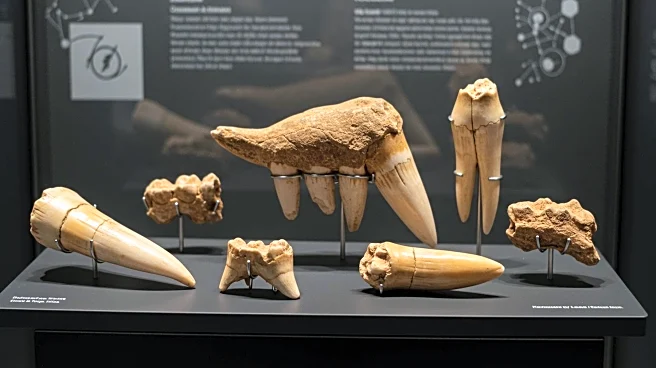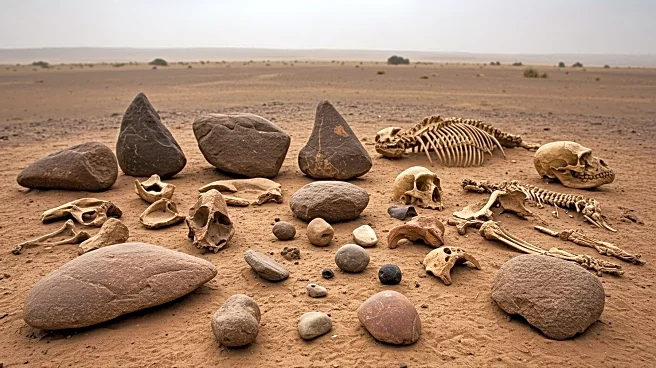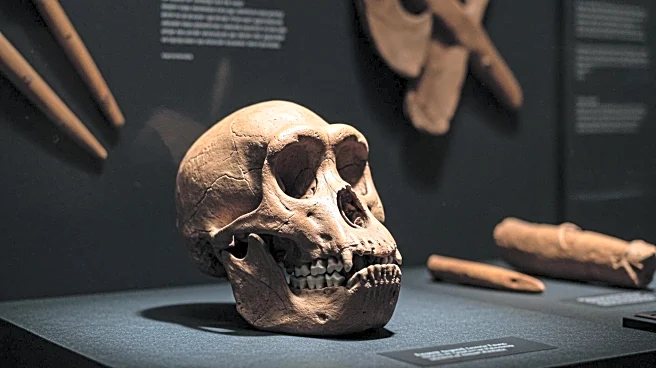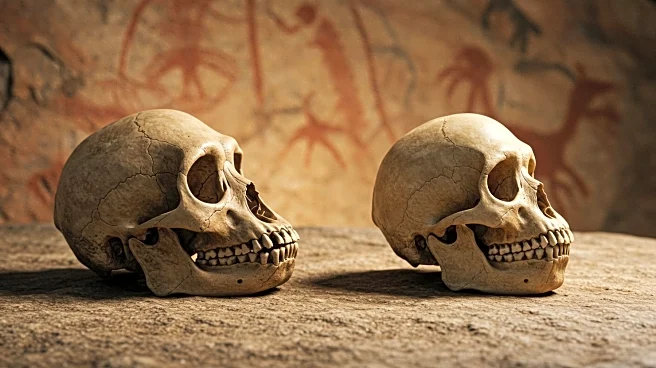What's Happening?
Researchers in Ethiopia have uncovered 13 fossilized teeth believed to belong to a previously unknown species of Australopithecus. These teeth were found in the same sedimentary layers as the oldest known Homo fossils, suggesting that Australopithecus and early Homo ancestors coexisted up to 2.8 million years ago. This discovery challenges traditional theories of human evolution, which often depict a linear progression from ape-like ancestors to modern humans. The research, led by Arizona State University and published in Nature, emphasizes the importance of finding additional fossils to understand the differences between Australopithecus and Homo.
Why It's Important?
The discovery has significant implications for our understanding of human evolution. It suggests a more complex evolutionary timeline where multiple hominin species coexisted, potentially interacting and influencing each other's development. This challenges the conventional view of a straightforward evolutionary path and highlights the need for further research to uncover the nuances of early human ancestry. The findings could reshape theories about how early humans adapted to their environments and interacted with other species, providing insights into the evolutionary pressures that shaped modern humans.
What's Next?
Researchers plan to analyze the tooth enamel of the discovered fossils to gain insights into the diet and lifestyle of this new Australopithecus species. Comparing these findings with existing data on early Homo species could reveal how these hominins coexisted and adapted to their environment. The team aims to continue excavations in the region to uncover more fossils, which could further illuminate the evolutionary history of early humans and their relatives.












